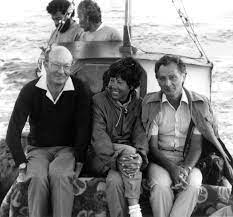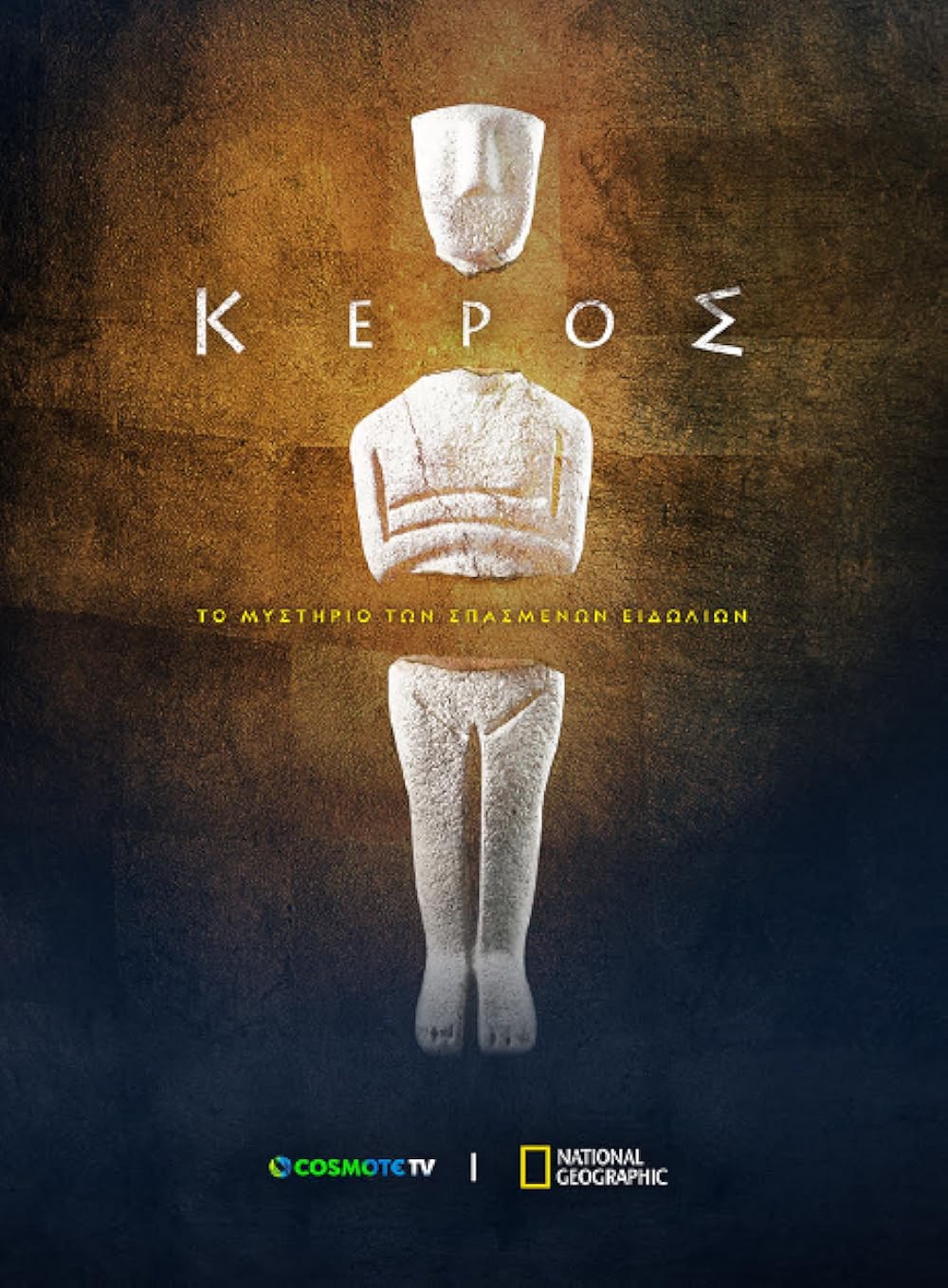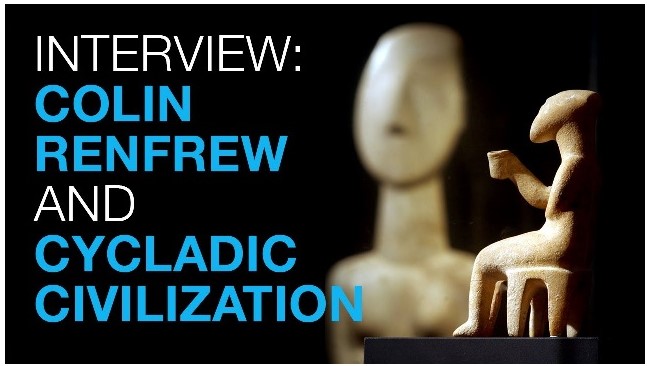The oldest maritime sanctuary
Four and a half thousand years ago, in the Early Bronze Age (ca. 2800BC to 2200 BCE), the remote and now uninhabited island of Keros, in the middle of the Cyclades, Greece, was the site of an extraordinary florescence of human imagination, creativity and ingenuity. Here, in the most unlikely of places, people came together to craft the basic principles of a completely new kind of society – the dawn of the modern world. Through co-operation, connectivity and communication they created the world’s first information age, drawing in participants from across the Cyclades and beyond, and on Keros itself they created the most ambitious way of life yet seen in the region, with monumental architecture, urban planning, high technology production, and complex vertical and horizontal social structures. Keros became the blueprint for the emergence of civilisation in the eastern Mediterranean, the harbinger of future Minoan and Mycenaean societies and even the early Greek polis. The Keros Project, led by science, is dedicated to the in-depth investigation of the world that Keros created.
The site first came to prominence in the 1960s, when Colin Renfrew and Christos Doumas (separately) visited the site and discovered that part of it had been subject to looting. The looted area was first investigated archaeologically in 1963 by Doumas. Further investigation of the site was carried out in 1967 by Zapheiropoulou and in 1987 by Renfrew, Doumas and Marangou. Publication of this work followed in 2007. Since then three major international collaborative projects have been carried out on Keros. These projects have completely transformed our understanding of what was previously seen as a Cycladic enigma. The work done has defined the site as central in the networks of the Early Bronze Age, a centre of congregation for long-lived pan-Cycladic ritual practices as well as a centre of power where the greatest architectural undertakings of the age housed centralised craft practices, set in a landscape of intensified agricultural innovations and satellite settlements.
Looters damaged Keros in the years before 1963, but early rescue work showed the site to be unusual in nature, with lots of broken marble figurines and vessels. Scientific work in 2006-2008 showed that Kavos area on the west coast of Keros was site of two ‘special deposits’, areas where people deliberately (and probably ritually) deposited broken choice material over a period of three centuries or more. The analysis of these data shows that Kavos was the site of the world’s earliest maritime sanctuary. Click here to learn what that means, and much more about the two special deposits.
Dhaskalio, now a tiny islet just off the west coast of Keros, was joined to Kavos and the area of the special deposits by a causeway in the Early Bronze Age, as the sea level was lower then. Recent work on Dhaskalio has revealed unprecedented monumental architecture, and remarkably precocious evidence for metalworking. Now we are beginning to understand that the story of Keros includes intensive periods of production of prestigious objects like daggers, which might have been just as potent symbols for the Cycladic islanders as the marble figurines were. Click here to learn more about Dhaskalio and its relationship with Kavos.
One important question is the relationship between Kavos and Dhaskalio: how were the activities of production on Dhaskalio interrelated with the apparently more ritual activities on Kavos? But another, similar, question is the relationship between the Dhaskalio and Kavos complex and larger areas: the island of Keros, for example, or the nearby islands, or the wider world of the Cyclades and the Aegean? In order to investigate this question we conducted a series of larger-scale surface investigations (surveys) on Keros itself, nearby Kato Kouphonisi, and in the southeast coastal region of Naxos. Click here to learn more about the Keros nexus.

The Keros Project is excited to announce that we will return to Dhaskalio in 2026! We are planning a six-week season from April to June 2026 (precise dates tba), the second of five planned field seasons. The excavation will formally be a co-operative project between the Greek Ministry of Culture (Ephorate of Antiquities of Cyclades) and the British School at Athens, with the close collaboration of The Cyprus Institute. The directors will be Michael Boyd (BSA/CyI), Evi Margaritis (CyI) and Demetris Athanasoulis (EfAKyk).
Previous work on Keros uncovered the world’s earliest maritime sanctuary at Kavos on western Keros as well as initiating excavations on Dhaskalio. The 2016-2018 Dhaskalio excavations showed the site to be one of the key sites in the eastern Mediterranean for understanding the momentous changes in human society in the third millennium BCE. Since the end of fieldwork in 2018 the Keros publication team has been working hard to study and catalogue material, conduct laboratory analyses, and synthesise the results.
Given the importance of the site, the questions raised by the results of the preceding campaigns, and the fact that only about 10 per cent of the area of Dhaskalio thought to be inhabited has been excavated, the new project aims to tackle the following research questions:
• Is there a wider range of functions at Dhaskalio than previous excavations were able to identify, perhaps because of a clear division in space through the architectural complex? Or was the site mainly used as a craftworking centre?
• How did the site of Dhaskalio operate within the wider milieu of sites on Keros and other nearby islands, and to what extent did these form a disparate taskscape?
• What were the earliest activities on Dhaskalio, especially on the summit?
• Was there a break in occupation between Phases B and C?
• Is climate change the principal reason for the abandonment of the site (4.2 ka event)?
As in previous campaigns, the excavation will be world-leading in terms of being born digital, highly and continuously interdisciplinary, and dedicated to using all available techniques and skillsets to retrieve every possible range of data from the process of excavation.
The excavation is looking for a large crew of dedicated and enthusiastic archaeologists and volunteers to work on site and in the field laboratory. In particular, we are looking for:
• Archaeologists with experience in commercial archaeology who have varied cvs and who could work with us at the level of trench supervisor or assistant trench supervisor;
• Archaeologists with good experience of excavations in Greece and the Mediterranean, and especially those who have experience of both Mediterranean excavation and commercial archaeology;
• Veterans of previous Keros excavations;
• Student volunteers.
Whether you worked with us before or are hearing about Keros for the first time, we are keen to hear from you if you would like to work with us. Please send us a short email outlining your experience and your interest in the site, along with your cv (cvs can be in English, Greek, French, Italian or Spanish; no need to translate them from these languages). In general, we will expect to cover expenses of accommodation, subsistence and travel within Greece.
Send emails to mailto:kerospersonnel@protonmail.com or click below.



It would be impossible to continue our leading research without our generous funders. If you would like to help us continue our exciting work on Keros, please contact us.

Cycladic Island archipelago was an important region throughout antiquity, and the islands have been inhabited since at least the Paleolithic. In the Neolithic and Early Bronze Age, the islands flourished and (as in all periods) they acted as important stepping stones between the landmasses of Europe and Asia.
Keros is located in the Small Cyclades (Μικρές Κυκλάδες), an island complex within the Cycladic archipelago to the south-east of Naxos, in the Aegean sea.
We would love to hear from potential collaboratos, funders, or interested people.